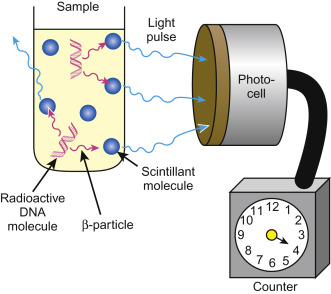What makes radiation detection tools so crucial in scientific research? How do these devices enhance the accuracy and reliability of experiments? In this article, let us explore how these detectors offer significant advantages in scientific research through their precision and sensitivity.
The Role of Radiation Detection Devices in Research
Scintillation detectors are essential in various fields, from nuclear physics to environmental science. Their ability to detect and measure highly precisely makes them invaluable in research settings. These devices play a pivotal role in many research applications where accurate measurement is required and work by converting high-energy emissions, such as gamma rays or beta particles, into visible light. This light is then measured, providing valuable data about the type and intensity of the radiation.
The device is favored for detecting even the most negligible amounts of radiation. This accuracy is critical in experiments where detecting low radiation levels can distinguish between success and failure. Their sensitivity allows researchers to obtain precise and reliable data, ensuring that the results of experiments are accurate and reproducible.
Advantages of Accurate Radiation Measurement
One of their most significant advantages is their accuracy. They are designed to measure radiation accurately, which is essential for scientific research. This precision is necessary in fields such as nuclear physics, where minor measurement errors can lead to incorrect conclusions.
Key benefits of precision in these instruments include:
- Accurate measurement of intensity
- Ability to distinguish between different types of particles
- Consistency in measurements across multiple experiments
- Detection of low levels of radiation with high confidence
- Reduction of uncertainty in experimental results
This allows researchers to focus on their experiments without worrying about data collection inaccuracies. This reliability is a key reason why these devices are trusted in research labs worldwide.
Sensitivity in Particle Emissions Detection
They are perfect for investigations that need to observe minute variations in emission levels since they can detect extremely low radiation levels. The high sensitivity of these sensors is due to the materials used in their construction, such as sodium iodide crystals, which efficiently convert light into detectable light.
This sensitivity is particularly valuable in environmental monitoring, where detecting trace amounts of particles is crucial. For example, researchers studying the effects on the environment rely on these sensors to monitor even the most minor changes. The ability to detect low-level radiation ensures no significant data is missed, providing a comprehensive understanding of the research subject.
Versatility in Research Applications
These detectors, from medical imaging to particle physics, are employed wherever accurate radiation measurement is needed. Their versatility comes from their ability to detect particle emissions, including alpha, beta, and gamma rays.
In medical research, they are used in imaging techniques such as PET scans, where precise detection is essential for creating accurate images. In particle physics, they help detect particles and measure their energy levels. This versatility makes these instruments indispensable in research, allowing scientific experts to explore a broad spectrum of phenomena.
The Future of Radiation Detection in Research
Continuous improvements in detector materials and design are leading to even greater precision and sensitivity. These advancements are expected to enhance the capabilities of these devices, making them even more effective tools in scientific research.
Particle detectors will likely be crucial in new research areas like quantum physics and advanced medical diagnostics. Due to their continued capacity to offer sensitive and precise detections, they will remain a vital resource in the scientific community.
Scintillation detectors offer unparalleled precision and sensitivity, making them indispensable in scientific research. The accuracy with which they detect and measure particle emissions is crucial for obtaining reliable experimental results. As these devices continue to develop, they will remain at the forefront of radiation detection technology, ensuring that researchers have the tools they need to explore and understand the world around them.



